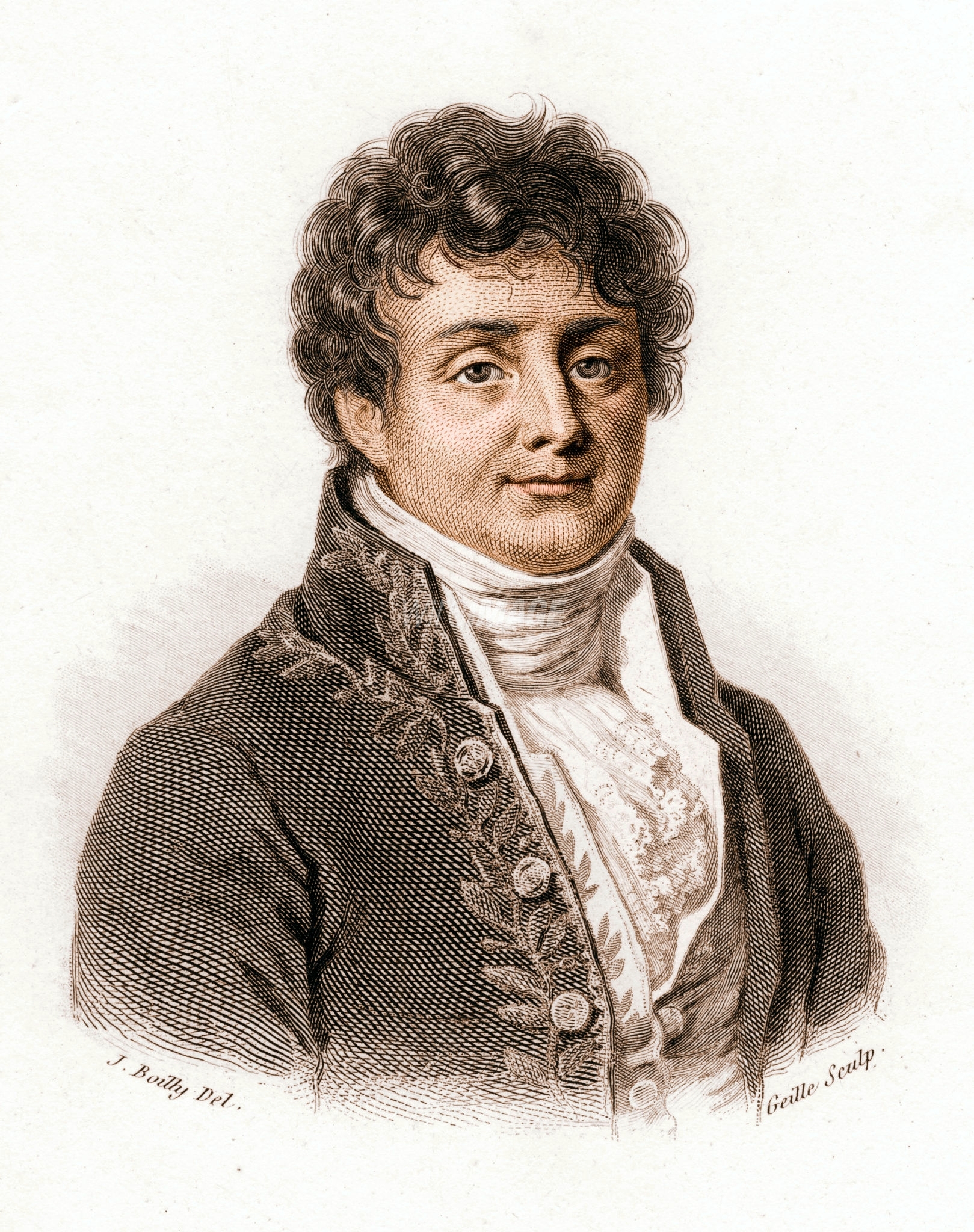“Profound study of nature is the most fertile source of mathematical discoveries.”
Źródło: The Analytical Theory of Heat (1878), Ch. 1, p. 7
Jean Baptiste Joseph Fourier – francuski matematyk i fizyk.
Twórca teorii szeregów Fouriera i transformacji Fouriera.
Szereg Fouriera to przedstawienie funkcji okresowej f w postaci sumy nieskończonego ciągu sinusów i cosinusów pomnożonych
przez współczynniki. Fourier podał wzory całkowe na te współczynniki i twierdził, że ten szereg jest zbieżny do f dla szerokiego zakresu funkcji. Warunki dostateczne, przy których szereg Fouriera jest zbieżny do rozwijanej funkcji podał Dirichlet.
Fourier używał tych szeregów w swej fundamentalnej pracy z teorii przewodzenia ciepła, opublikowanej w swej pracy
Théorie analytique de la chaleur, Paris, 1822.
Na jego cześć uniwersytet w Grenoble, w którym w 1811 r. założył on Faculté des Sciences, nazwano L’université Joseph-Fourier .
Źródło: http://dictionnaire.sensagent.leparisien.fr/Université Grenoble-I/fr-fr/ data dostępu = 2017-03-06
Jego nazwisko pojawiło się na liście 72 nazwisk na wieży Eiffla.

“Profound study of nature is the most fertile source of mathematical discoveries.”
Źródło: The Analytical Theory of Heat (1878), Ch. 1, p. 7
Źródło: The Analytical Theory of Heat (1878), Ch. 1, p. 6
Kontekst: If we consider further the manifold relations of this mathematical theory to civil uses and the technical arts, we shall recognize completely the extent of its applications. It is evident that it includes an entire series of distinct phenomena, and that the study of it cannot be omitted without losing a notable part of the science of nature.
The principles of the theory are derived, as are those of rational mechanics, from a very small number of primary facts, the causes of which are not considered by geometers, but which they admit as the results of common observations confirmed by all experiment.
Preliminary Discourse, p.7 Note: often quoted as Mathematics [or mathematical analysis] compares the most diverse phenomena and discovers the secret analogies that unite them.
The Analytical Theory of Heat (1878)
Źródło: The Analytical Theory of Heat (1878), Ch. 1, p. 1